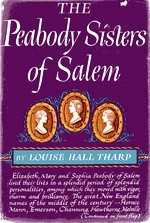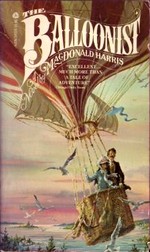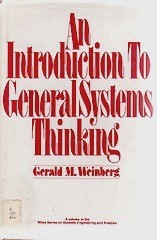
· Excerpt
· Editor’s Comments
· Find Out More
· Locate a Copy
Excerpt
No, that must be wrong. One must make a life, out of the lump of raw commonplace, content with a kind of average return. Or fix upon some definite, tangible objective, and convince yourself that it’s worth your whole effort. Men did that, too, accumulated money and possessions and strove for importance. Mysie thought, at least Gina is successful; a great match is the legitimate traditional ambition for a woman, as much as place or power for a man. And Geraldine is successful, not because she has written a best seller, nor because she had got a husband; Leonard isn’t much; but she has made something out of their relation, out of her marriage and her children; they belong to her.
For herself, Mysie had decided some years ago, she would have to work. Work was all right of itself. It wouldn’t get you anywhere; she saw that. Presumably a career was as good for a woman as for a man, if no better; but she knew it would never be enough for her. After all, a man who has only a public life, even if he is a Napoleon, is somehow a poor creature, posturing and pathetic; and furthermore, Mysie had an inexplicable conviction that those apparently solid rewards were growing hollow, being eaten away by some spirit of the times, perhaps through being sought as an end in themselves. Everybody played the stock market for easy money; everything was flashy and tipsy and swift. And yet nobody really had any fun; there was always an aftertaste of bad gin in the pleasure. She did not like the way things were, the stupid drinking and promiscuous pawing and meaningless familiarity, in which all personal values went by the board and people seemed to derive an imbecile gratification from cheapening themselves. Work was better than that. Abstinence and virtue became attractive.
I suppose I’m a failure, Mysie thought. The simplest, most ordinary fool, crying for the moon…. But isn’t there something?
Editor’s Comments
Written in the wake of the 1929 stock market crash and the onset of the Great Depression, The Golden Vanity is at once a subtle social comedy of errors and mores and a deeply cynical view of the Jazz Age, shown through the lives of three very different women. Cousins of various removes, Gina, Geraldine, and Mysie (for Artemisia) are all living in New York City when the novel opens somewhere in the early 1920s.
The novel opens with Gina, secretary to the head of a social charity, being hired as a reader for Mrs. Charlotte Siddall, a grand dame “so used to the part of a great hostess that it had become second nature to her,” during a short loss of sight due to surgery. Mrs. Siddall appreciates Gina’s aid, tact, and striking beauty, but sees her as no more than hired help. Contrary to her intentions, however, Mrs. Siddall’s grandson and heir, Arthur, a quiet and sheltered bibliophile, falls in love with Gina. After several attempts to undo the alliance through emotional and financial manipulations, she concedes, and the two marry. Born into a ne’er-do-well family from a small Washington state logging town, Gina accepts her situation as some form of success, and adapts easily to the life of wealth, even though she never feels any real connection with Arthur.
Geraldine, on the other hand, achieves her success on her own, writing a best seller that enables her to pay for an apartment in the West Seventies, a cook, a housemaid, and a nurse for her two children. Her husband Leonard is another of Paterson’s thin, feckless men, a mediocre company man who speculates on Wall Street with Geraldine’s royalties.
Mysie, the third cousin, works as a press agent for a Broadway producer, rooms with Thea, the widow of a man who shot himself after an earlier stock market failure, and carries on an ambiguous friendship with Jake, a man who is both a gadfly and a deeply serious and intelligent writer … or might be, at least. Even though Mysie’s life seems, on the surface, to be quite unconventional, even bohemian, as the story develops, we come to see that she is most “grounded” (as we would say today). Indeed, although The Golden Vanity focuses on Gina at its start, Mysie emerges as the book’s center, observing and commenting with irony and skepticism on the lives and events around her.
As the Twenties unfold, Arthur and Gina have a son and Gina rises as a socialite, gaining some respect from Mrs. Siddall. Arthur dabbles in arts and politics, founding a small, left-leaning magazine that runs at a loss. Geraldine continues to write. Mysie becomes an actress, good enough to gain some small celebrity. She and Thea buy a small weekend house, not much more than a shack, out on Long Island. Jake gets a play produced, then another.
Meanwhile, the termites are at work. Hints are dropped — dropped and passed over — that the financial boom is built on deceit and sleight-of-hand. An acquaintance suggests to Mrs. Siddall that her impressive new office building is underwritten with junk bonds. Leonard’s stock buys get riskier. A play Mysie is cast in has to fold just before opening when the backer comes up short.
But the parties carry on. At one, Mysie flirts with a Frenchman and asks him, “I daresay New York strikes you as a madhouse?” “Not mad,” he replies, “but Atlantean. It confounds judgment.” In Paterson’s view, the Crash is inevitable, the consequence of lives lived without the motivation of need. “Wisdom and beauty are not to be had for nothing,” Mysie thinks at one point. “Work is something that must be done.”
When it comes, the Crash comes almost as an anticlimax: “… [A] breath brought it down. It was a soundless catastrophe.” It is also, however, an indiscriminate catastrophe. It hits new money and old. Leonard’s stock bubble bursts, the family is forced to cram into a small flat, and they live from sale to sale of Geraldine’s stories. She has a nervous breakdown and flees to Cuba, where she has a brief affair with a gangster than ends melodramatically when he is shot in their hotel room. “Geraldine saw she had never depended on Leonard,” Paterson writes, but we already knew that. Mrs. Siddall’s junk bonds collapse and her half-finished building consumes what’s left of her fortune. Reeling from the shock, she suffers a stroke and dies. Arthur and Gina’s son dies of a sudden illness. The brownstone mansion they shared becomes a shell.
Mysie goes on, though, as she must, being Paterson’s oracle. She’s become recognized in recent years as a pioneer of libertarianism, thanks largely to Stephen Cox’s The Woman and the Dynamo, and we can see her political views surface throughout Mysie’s commentaries:
Between the blasted reformers and the earnest immoralists a pretty good country has been darned near ruined. Neither will recognize that there really are different kinds of people. There used to be room for everybody to be what they were. Cities, small towns, suburbs, farms, backwoods. Rigid respectability with the alternative of doing what you pleased at your own risk. Take it or leave it.
This could almost serve as a gloss on libertarianism. Underlying these thoughts, however, is Paterson’s atomistic view of human existence:
Being what we are, we must each have a separate world. They tell us we are going through enormous changes, that everything will be different. But it will last our time; it must, for you create and hold your own world around you, so it can end only when you die. And none of us can know what the other’s world is or looks like….
“How difficult, how impossible communication is,” a character muses in Paterson’s Never Ask the End. In The Golden Vanity, Mysie thinks, “Speech is the distinguishing mark of human beings; and every word we use is charged with the whole burden of experience.” If this is, indeed, Paterson’s outlook, then libertarianism is not just a matter of making “room for everybody to be what they were,” but the natural state for us isolated, experience-charged particles.
 The problem with the Twenties, as Paterson characterizes it, was not a matter of “doing what you pleased” but doing what everyone else was doing, and doing it thoughtlessly. Despite her deeply individualistic view of life, she admires the Victorians for the effort they put into maintaining their structured morality: “Respectability is a genuine accomplishment,” Mysie says at one point, and of all the characters in The Golden Vanity, Paterson gives most credit to Mrs. Siddall: her attempts to manipulate Arthur and others is, at least, an active defense of the status quo.
The problem with the Twenties, as Paterson characterizes it, was not a matter of “doing what you pleased” but doing what everyone else was doing, and doing it thoughtlessly. Despite her deeply individualistic view of life, she admires the Victorians for the effort they put into maintaining their structured morality: “Respectability is a genuine accomplishment,” Mysie says at one point, and of all the characters in The Golden Vanity, Paterson gives most credit to Mrs. Siddall: her attempts to manipulate Arthur and others is, at least, an active defense of the status quo.
For the generation that follows hers, however, there is no foundation to fall back upon when the bubble of the myth of success bursts. In the book’s closing scene, Jake tells a group gathered at Mysie and Thea’s house about an incident in which he and several others spent hours adrift in a boat, not realizing they were all the time within feet of the shore. “We’ll never touch our shore again,” Mysie thinks, hearing this. “That landfall is lost forever, down under.”
As interesting as the commentaries in The Golden Vanity are, though, they cannot hide the fact that, Mysie and Mrs. Siddall aside, this is a book populated by names more than characters. Gina is meant to be shown as superficial, but Paterson’s intent is undermined when Geraldine and others remain equally flat. Despite some fine passages and a strong underlying theme, The Golden Vanity seems to me incomplete, almost unfinished. Perhaps Paterson was dissuaded from making the book as indirect and experimental in its approach as Never Ask the End, but I suspect it would have been far more effective and coherent if she could have ventured further from the confines of a novel of manners. Paterson might have respected structure, but her personality seems never to have sat too comfortably with it.
This does not mean, though, that The Golden Vanity is not an entertaining and enlightening book, more than worthy of resurrection in print. If Dawn Powell can rate two volumes in the Library of America, Isabel Paterson at least deserves some serious critical attention for more than just her political writings. Although I can hardly claim to speak on their behalf, I suspect more than a few women of today would find Mysie and Marta (of Never Ask the End) remarkably contemporary in their situation and views. And if this short excerpt from her New York Herald Tribune Weekly Books Review column, “Turns with a Bookworm” is representative, a collection of her newspaper pieces would make a terrific read.
Find Out More
- Wikipedia entry on Isabel Paterson
- Cato Institute page on Isabel Paterson
- Overview of Isabel Paterson’s papers at the Herbert Hoover Presidential Library
- From Google Book, passages on The Golden Vanity from Stephen Cox’s The Woman and the Dynamo
- The Austensorium blog recommends The Golden Vanity as one of the novels to look for After You’ve Read Persuasion For The Fifteenth Time
- Lyrics to the old English folk song, “The Golden Vanity,” from which Paterson took the book’s title.
Locate a Copy
- Look for it at Amazon.com: Find it!
- Look for it at Amazon.co.uk: Find it!
- Look for it at AddAll.com: Find it!

 Louise Tharp Hall first celebrated the remarkable sisters in her 1950 collective biography,
Louise Tharp Hall first celebrated the remarkable sisters in her 1950 collective biography,  Their responses show that undervalue, like value, is very much in the eye of the beholder. Given the wealth of academic attention paid to Flannery O’Connor’s work and the fact that
Their responses show that undervalue, like value, is very much in the eye of the beholder. Given the wealth of academic attention paid to Flannery O’Connor’s work and the fact that  The complete substitution of theory for observation is, of course, not scientific. Even worse is going through the motions of observing, but discarding as ‘spurious’ every observation that does not fit theory — like the Viennese ladies who weigh themselves before entering Demel’s Tea Room. If they’re down a kilo, they have an extra mochatorte, and if they’re up a kilo they pronounce the scale ‘in error’ and have an extra mochatorte anyway.
The complete substitution of theory for observation is, of course, not scientific. Even worse is going through the motions of observing, but discarding as ‘spurious’ every observation that does not fit theory — like the Viennese ladies who weigh themselves before entering Demel’s Tea Room. If they’re down a kilo, they have an extra mochatorte, and if they’re up a kilo they pronounce the scale ‘in error’ and have an extra mochatorte anyway.